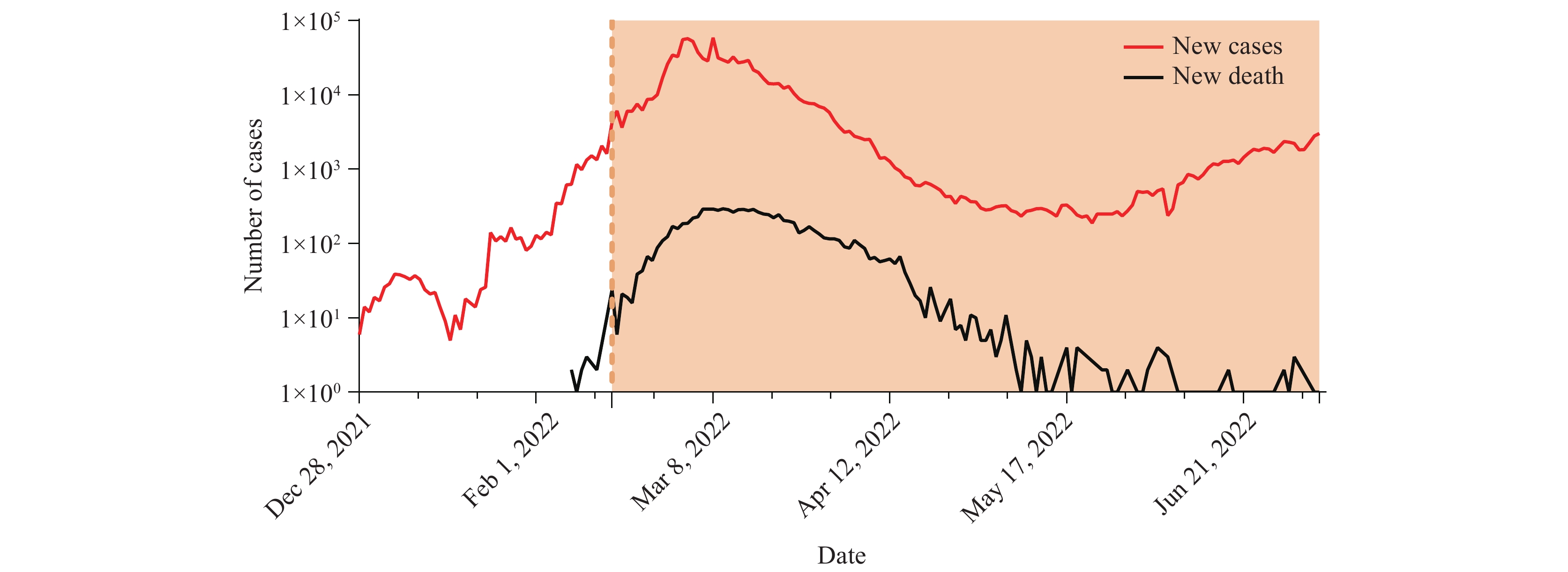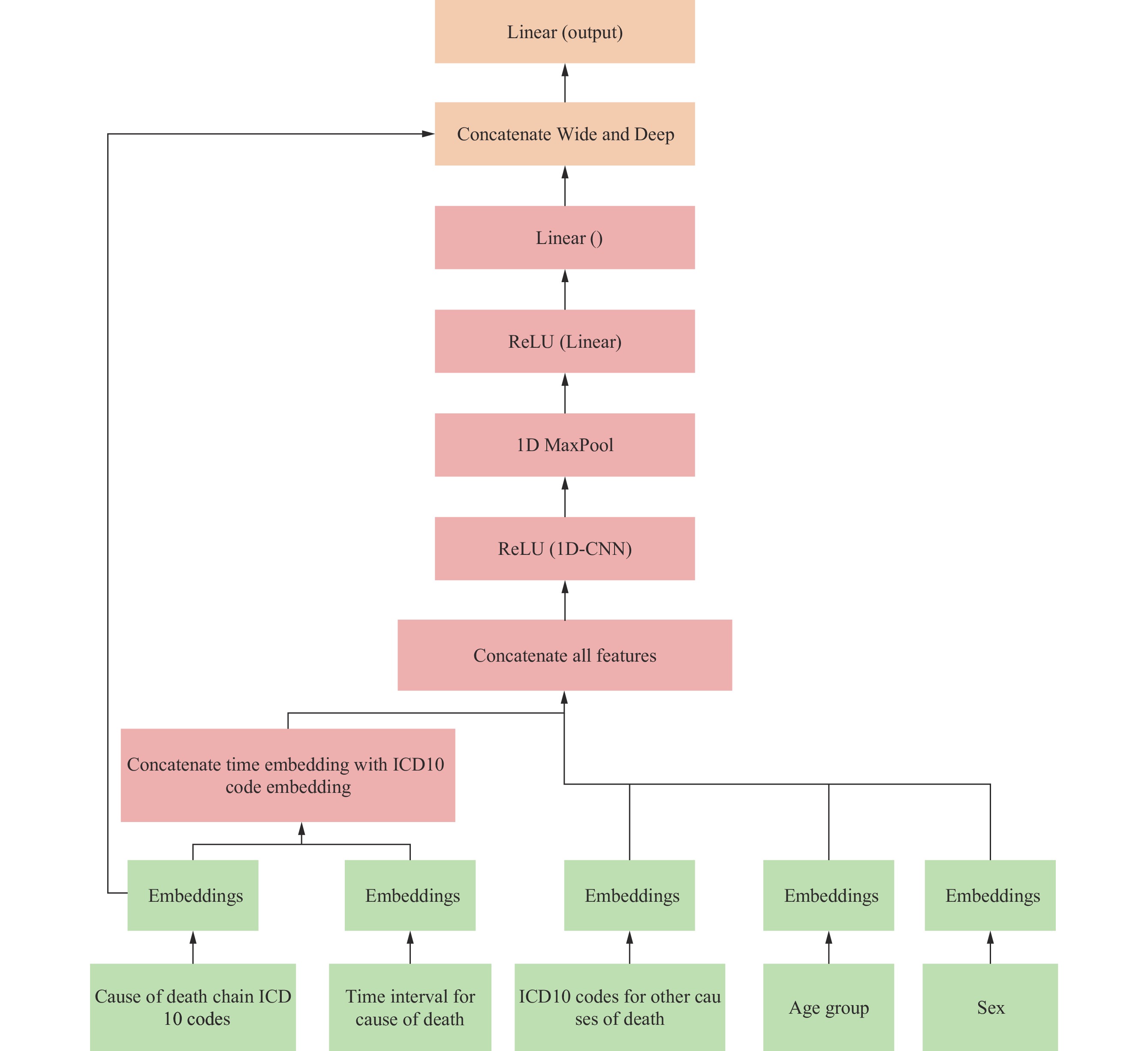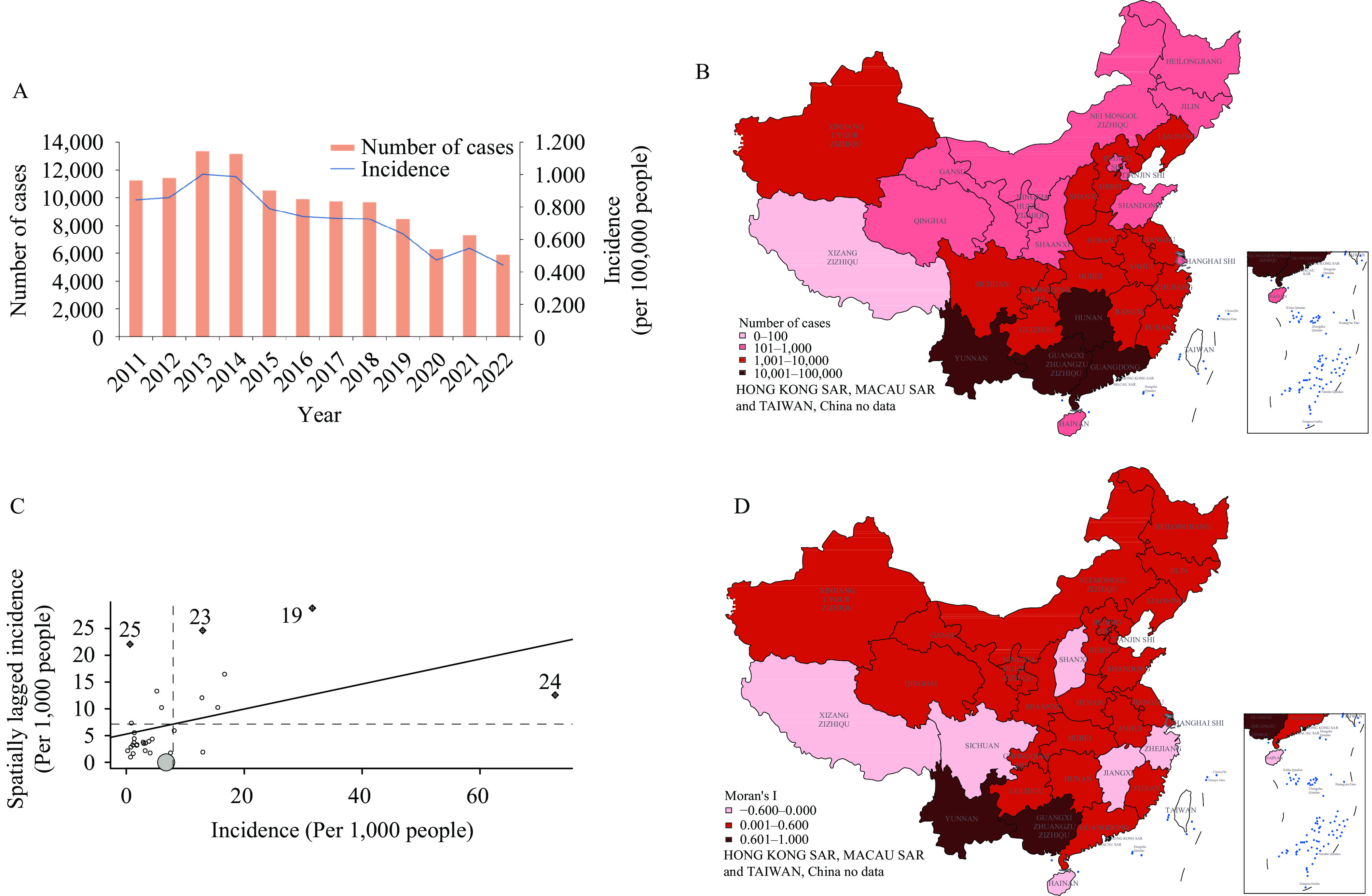2024 Vol. 6, No. 21
The Omicron variant of severe acute respiratory syndrome coronavirus 2 (SARS-CoV-2) demonstrates increased transmissibility compared to earlier strains, contributing to a significant number of fatalities in Hong Kong Special Administrative Region (HKSAR), China. Adequate medical resources and medications are essential in mitigating these deaths. This study evaluates the effects of supplementary resources from the Chinese mainland during the fifth wave of the pandemic in HKSAR.
Vector autoregression (VAR) was employed to analyze data from the Oxford coronavirus disease 2019 (COVID-19) Government Response Tracker to assess the effectiveness of control measures during five waves of the pandemic in HKSAR. Additionally, a transmission dynamics model was created to investigate the influence of supplementary medical resources from the Chinese mainland and oral medications on mortality.
In the initial four waves, workplace closures, restrictions on public events, international travel bans, and shielding the elderly significantly influenced pandemic management. Contrarily, during the fifth wave, these measures showed no notable effects. When comparing a situation without extra medical resources or COVID-19 oral medication, there was a 17.7% decrease in COVID-19 fatalities with mainland medical resources and an additional 10.2% reduction with oral medications. Together, they contributed to a 26.6% decline in fatalities.
With the rapid spread of the virus, regional reallocation of medical resources may reduce mortality even when the local healthcare system is overstretched.
This study provides a detailed analysis of the daily fluctuations in coronavirus disease 2019 (COVID-19) case numbers in London from January 31, 2020 to February 24, 2022. The primary objective was to enhance understanding of the interactions among government pandemic responses, viral mutations, and the subsequent changes in COVID-19 case incidences.
We employed the adaptive Fourier decomposition (AFD) method to analyze diurnal changes and further segmented the AFD into novel multi-component groups consisting of one to three elements. These restructured components were rigorously evaluated using Pearson correlation, and their effectiveness was compared with other signal analysis techniques. This study introduced a novel approach to differentiate individual components across various time-frequency scales using basis decomposition methods.
Analysis of London’s daily COVID-19 data using AFD revealed a strong correlation between the “stay at home” directive and high-frequency components during the first epidemic wave. This indicates the need for sustained implementation of vaccination policies to maintain their effectiveness.
The AFD component method provides a comprehensive analysis of the immediate and prolonged impact of governmental policies on the spread of severe acute respiratory syndrome coronavirus 2 (SARS-CoV-2). This robust tool has proven invaluable for analyzing COVID-19 pandemic data, offering critical insights that guide the formulation of future preventive and public health strategies.
Accurately filling out death certificates is essential for death surveillance. However, manually determining the underlying cause of death is often imprecise. In this study, we investigate the Wide and Deep framework as a method to improve the accuracy and reliability of inferring the underlying cause of death.
Death report data from national-level cause of death surveillance sites in Fujian Province from 2016 to 2022, involving 403,547 deaths, were analyzed. The Wide and Deep embedded with Convolutional Neural Networks (CNN) was developed. Model performance was assessed using weighted accuracy, weighted precision, weighted recall, and weighted area under the curve (AUC). A comparison was made with XGBoost, CNN, Gated Recurrent Unit (GRU), Transformer, and GRU with Attention.
The Wide and Deep achieved strong performance metrics on the test set: precision of 95.75%, recall of 92.08%, F1 Score of 93.78%, and an AUC of 95.99%. The model also displayed specific F1 Scores for different cause-of-death chain lengths: 97.13% for single causes, 95.08% for double causes, 91.24% for triple causes, and 79.50% for quadruple causes.
The Wide and Deep significantly enhances the ability to determine the root causes of death, providing a valuable tool for improving cause-of-death surveillance quality. Integrating artificial intelligence (AI) in this field is anticipated to streamline death registration and reporting procedures, thereby boosting the precision of public health data.
Over the last 12 years, there has been a consistent decline in the cases of typhoid/paratyphoid fever in China. Studying the epidemiological patterns of these diseases in various provincial-level administrative divisions (PLADs) and examining potential influencing factors can provide crucial information for implementing successful control strategies.
In this study, we analyzed the cases and incidence rates of typhoid/paratyphoid fever reported in various PLADs of China from 2011 to 2022, along with exploring potential influencing factors. We initially studied spatial shifts in the incidence rates through centroid shift analysis. Seasonal variations in typhoid/paratyphoid fever onset were examined using heatmaps. Spatial autocorrelation analysis was utilized to understand the spatial correlations among different PLADs. To assess potential factors, we utilized a generalized estimating equations model that integrated spatial lag effects and sequence comparison analysis.
The study identified significant geographical clustering of typhoid/paratyphoid fever cases in southwestern China. A decrease in incidence rates in the west resulted in a movement of the disease center towards the east. Higher incidence occurred during warmer seasons, highlighting the seasonal pattern of the diseases. Factors such as meteorological conditions and socioeconomic status were probable influencers of typhoid/paratyphoid fever.
The geographical and temporal spread of typhoid/paratyphoid fever can be impacted by meteorological and socioeconomic factors. Enhancing economic conditions, particularly in regions with high disease prevalence, could aid in the prevention and management of these fevers.
The mathematical method to which theoretical epidemiology belongs is one of the three major methodologies in epidemiology. It is of great value in diagnosing infectious disease epidemic trends and evaluating the effectiveness of prevention and control measures. This paper aims to summarize the brief history of the development of theoretical epidemiology, common types of mathematical models, and key steps to develop a mathematical model. It also provides some thoughts and perspectives on the development and application of theoretical epidemiology in China.



 Subscribe for E-mail Alerts
Subscribe for E-mail Alerts CCDC Weekly RSS Feed
CCDC Weekly RSS Feed


